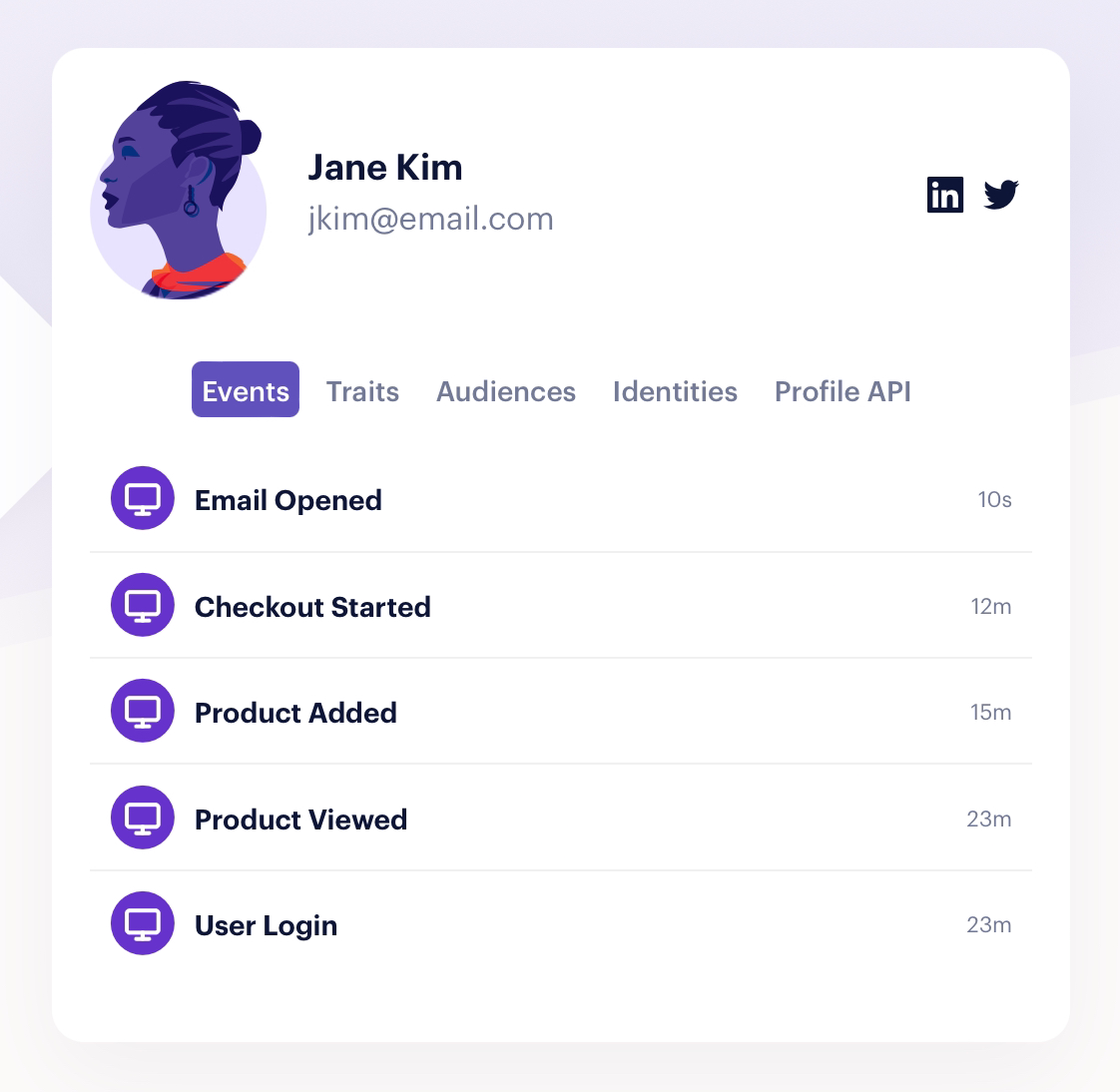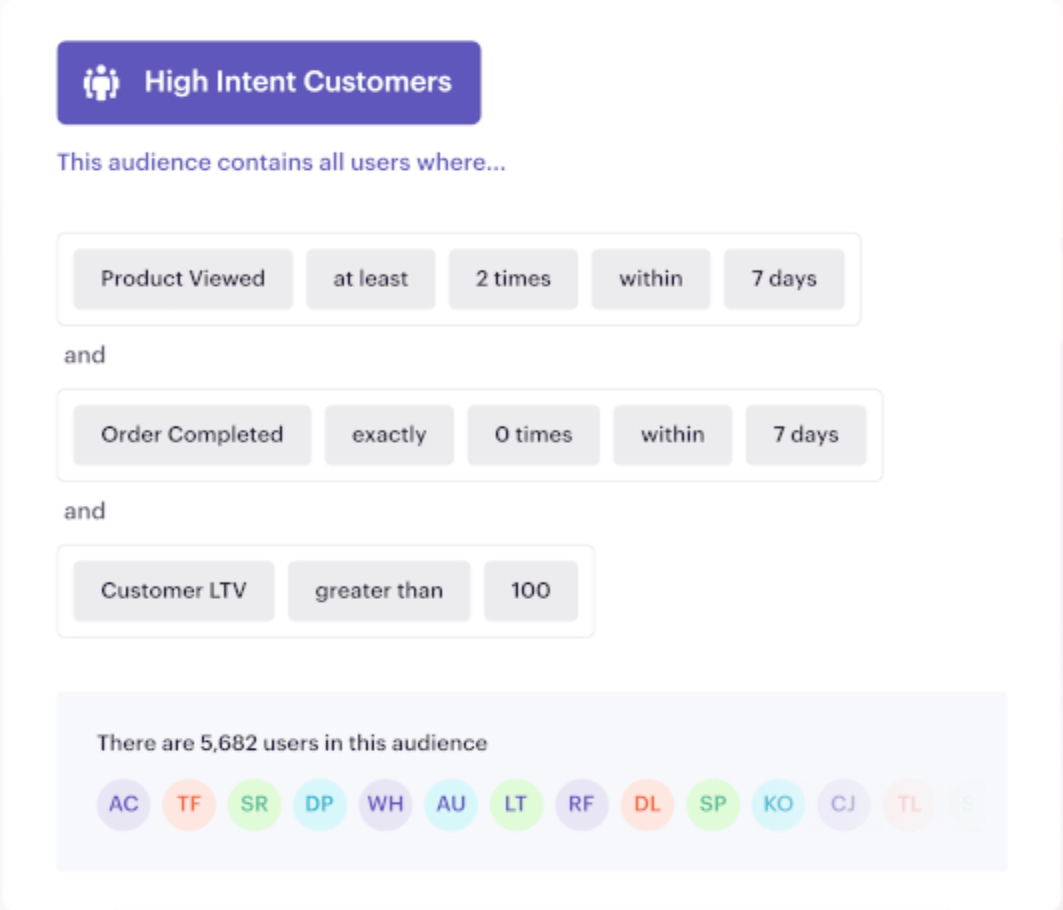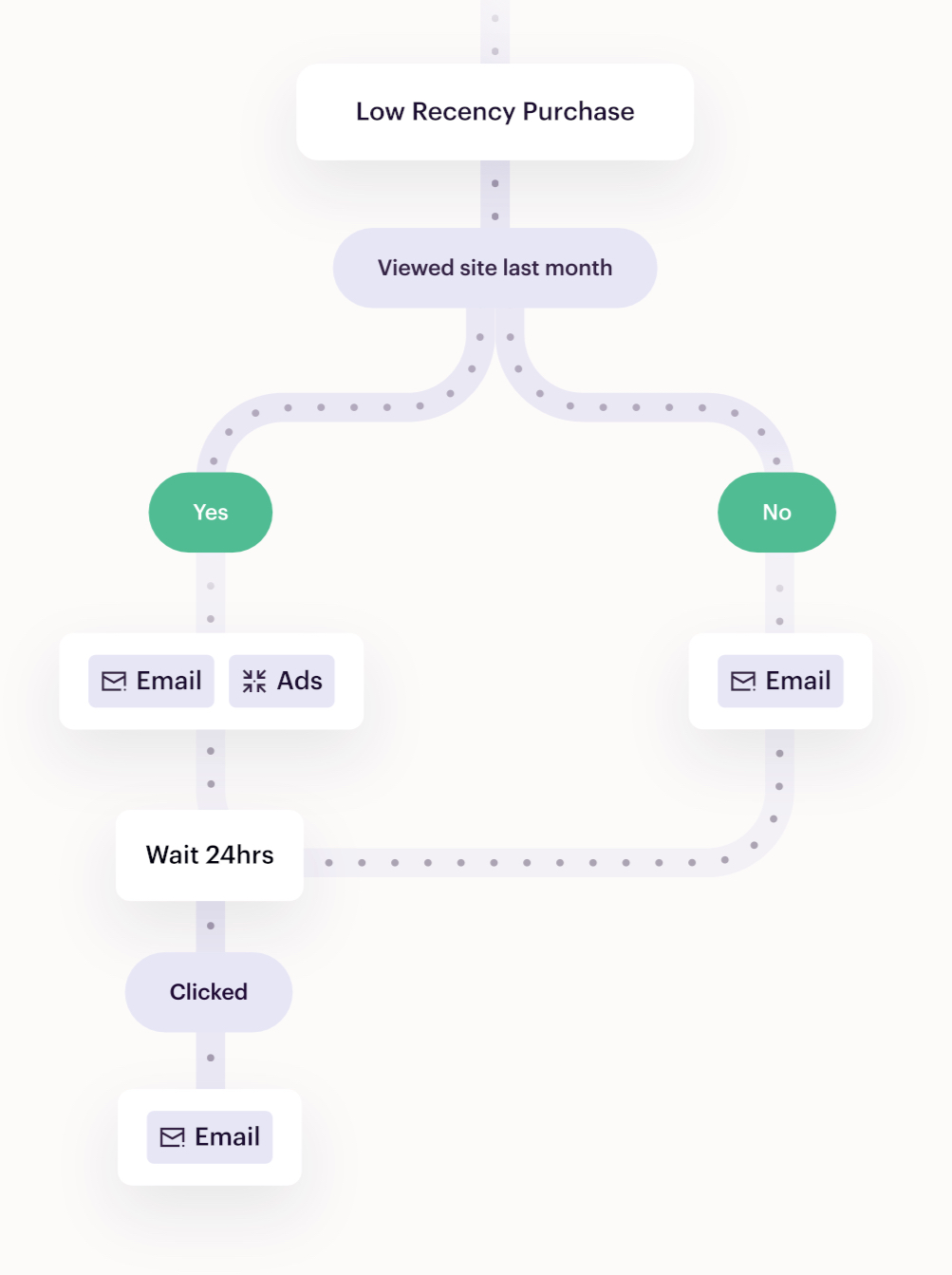Customer Segmentation Tools | Segment
Learn everything you need to know about customer segmentation tools.
Learn everything you need to know about customer segmentation tools.
A customer segmentation tool is a type of software that lets you automate the entire segmentation process by:
Pulling customer data from multiple channels
Analyzing massive amounts of customer data, such as age, location, needs and wants, shopping habits, and more – depending on what’s relevant to your business
Assigning leads and customers to customer segments based on shared traits and behavioral patterns
As you find more prospects and win over more customers, your customer segmentation tool will enable you to analyze data at scale. You won’t need to manually sift through hundreds and thousands of data points just to determine which segments each person belongs to – your tool will automatically do that for you.
You can then adjust your marketing strategies based on what you know about your segments.
Say you’ve identified a group of 21 to 30-year-old customers who read your online magazine before shopping on your eCommerce site. They tend to complete purchases faster than customers in the same age group who don’t read your online magazine. They also have much lower cart abandonment rates.
One day, your segmentation tool identifies a new customer who fits into the latter group, the non-readers. You know what to do: encourage them to read your online magazine. If your segmentation tool can trigger personalized marketing workflows (or integrates with a software that does), you can recommend content for that customer based on past actions they’ve taken on your site or their interactions with you on social media.
Customer segmentation tools vary in the way they integrate data sources, how much they can scale, and the complexity of their segmentation analyses. Tools may have limited applications, or they may integrate with plenty of marketing and customer engagement tools through APIs.
The marketing, product, and data teams should ideally be involved in the process of choosing a customer segmentation tool. The tool must meet not just your marketing goals but also future needs based on your product roadmap. At the same time, it should be feasible to implement – either as a new system or within your existing data infrastructure – and fit into your budget.
Consider these factors when you evaluate how a customer segmentation tool can help you meet your business goals:
The size of your existing and target markets
Your type of customer (e.g., B2B vs. B2C)
The number and types of channels where your customers interact with you, as well as channels you aim to add in the future
The granularity of data and insights you require
How much business value you expect to gain from automating your customer segmentation process
Basic customer segmentation tools can group customers based on commonly used methods: demographic, psychographic, and geographic. But you need more nuance than that to run effective, personalized customer engagement and marketing campaigns.
Ideally, your tool would perform behavioral analysis based on up-to-date customer engagement data. This is made possible by tools that integrate with a customer data platform (CDP) or a cloud-based CRM.

Let’s go back to the magazine readers in our earlier scenario. A 25-year-old customer visits your website, browses through your selection of running shoes, adds one to their cart, and leaves. The CDP adds those actions to that customer’s profile. If the profile meets the criteria for a certain segment with similar behavioral patterns, the customer gets added to the group.
You may also use other customer segmentation models like value-based and needs-based – so you need to check that your tool supports these models or allows you to customize the models for more granular groupings. Consider an AI-driven tool that can identify new possible segmentation methods based on similarities among customers.
For instance, you may unearth the shared traits of high intent customers – those who are highly engaged and have the potential to become long-term, high-value customers. Once a customer checks all those boxes, the tool automatically adds them to that group.

The types of software that can be integrated with your segmentation tool will also have an impact on the depth and granularity of your segmentation analysis. For example, if you want to find groups of customers who have complained about your brand on the web and on social media, you’d look for the ability to integrate with a social listening and sentiment analysis tool like Social Mention or Qualtrics.
A customer segmentation tool should either come with descriptive analytics or integrate with an analytics tool so you can see how each segment has performed over time.
You can then see how customer retention and value have changed and spot groups that will likely have a long relationship with your business and a high lifetime value. You can also identify larger trends in each segment’s behavior over the years – for example, shopping more frequently during summer or buying more from brick-and-mortar stores in December.
Such information will guide you in planning your marketing strategies and budgets and in projecting ROI for specific campaigns.
Segmentation simply defines and describes groups of customers, but it doesn’t activate the data for use in marketing campaigns. Some tools like Personas, though, can trigger marketing workflows the moment a customer meets the criteria for a given segment.
Marketing platforms with built-in segmentation tools can do this, too. Mailchimp lets you design email campaigns around customer segments, while Sprout Social does the same for social media ads.
Say you aim to improve customer retention and identify a group of customers who haven’t made a purchase in the past three months but have viewed your website in the past month. Whenever a customer gets added to that group, your tool automatically triggers a workflow you’ve designed:

With the ability to deploy workflows based on segments that incorporate real-time customer data, you can fulfill customer expectations for a personalized experience. It’s a simple, scalable action, but one that reaps vast benefits, as we’ve found that 60% of consumers will buy again from a business after having a personalized experience.
Dirty data makes your segments inaccurate. You can learn more about how to ensure data quality in our guide to data cleaning, but here are some general tips:
Make a clear tracking plan that identifies your data sources and the types of data you’ll track
Establish data naming conventions and implement them across all your data sources, if possible
Make sure your data collection forms and surveys come with parameters, choices, and questions that help you collect valid inputs and complete information
Prioritize data over empirical evidence, especially when determining the most useful ways to segment your market. Data will show which customer groups are most valuable to your business, as well as which groups respond well to your marketing campaigns.
Remember to remove outliers that skew your segmentation analyses. You might observe that customers in a certain city bought the greatest number of running shoes last year. The data shows that 80% of the purchases took place in February and March. It’s out of the ordinary, so you investigate why.
To understand outliers, you enrich your data with contextual information. You obtain this information through interviews, media monitoring, and social listening. You may find, for instance, that the increased demand was caused by a local influencer, a marathon, or a clearance sale by a retailer.
All marketers have hypotheses about their customers, but only the most effective ones test their theories with experiments and analytics.
You might hypothesize, “Customers who subscribe to our newsletter will make more frequent purchases than non-subscribers.”
In this scenario, you’d use your customer segmentation tool to:
Compare the purchase frequency of subscribers vs. non-subscribers
Compare the purchase frequency of customers after they subscribed to your newsletter vs. before they subscribed
Among subscribers, determine whether those with the highest purchase frequency share certain traits that other subscribers do not
Encourage low-value customers to subscribe to your newsletter and observe the purchase frequency of those who subscribe, controlling for other factors. AI-powered tools use regression analysis to determine whether or not a certain action significantly correlates with or affects a given outcome (i.e., purchase frequency)
These methods may be more technical than the analyses you’ve done so far as a marketer, but they’re necessary for obtaining valuable and nuanced insights, as well as discovering the most effective ways to improve customer value. You can learn more about them in our guide to customer segmentation analysis.
Connect with a Segment expert who can share more about what Segment can do for you.
We'll get back to you shortly. For now, you can create your workspace by clicking below.
Customer segmentation helps you identify groups of customers who share similar needs and traits. When a new customer meets the criteria for a certain segment, you predict how that person will respond to your marketing strategies based on the behavior of other customers in the group. You then tailor your marketing and customer engagement strategies to each segment.
Market segmentation is broader and more general than customer segmentation. You segment a market based on the products or services they buy from you, as well as by large geographic regions. Customer segmentation examines the traits and behaviors of individual customers.
Segmentation tools automate and scale the customer segmentation process.
Customers in a given segment typically share similar customer journeys.
Twilio Engage is a growth platform built on top of the Segment CDP. It lets marketers build, deploy, and analyze personalized marketing workflows across multiple channels, all within a single platform. With Engage, marketers run marketing campaigns for specific customer segments or for certain stages of a customer journey.